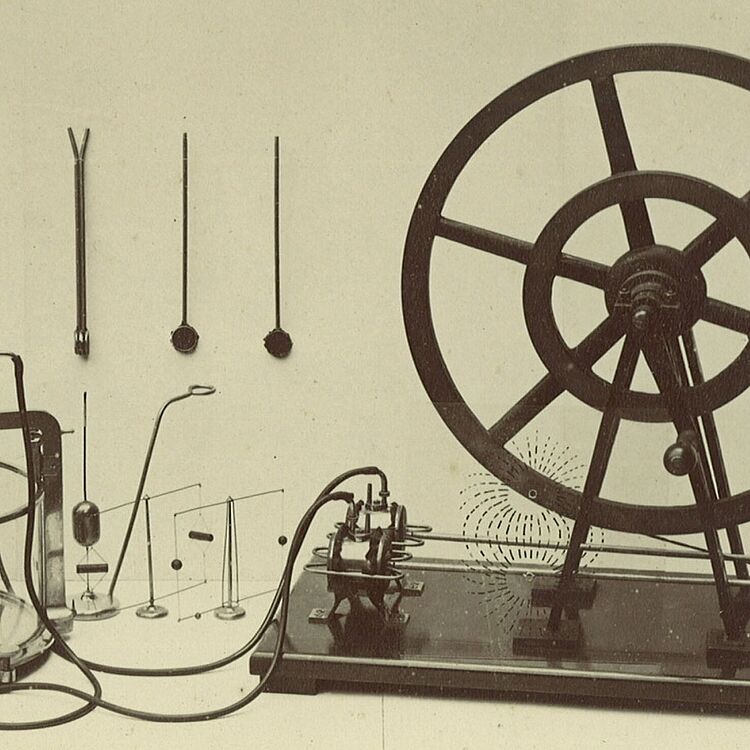Alter Semianarraum oder
online über Zoom Meeting
https://zoom.us/j/95603412698?pwd=lWi9j5gEC1WV5VKIx8RbQOYKsaCJIQ.1
Meeting-ID: 956 0341 2698
Kenncode: 135860
Roland Wittje (Museum of Cultural History, University of Oslo)
Understanding Electromagnetism: Carl Anton and Vilhelm Bjerknes' Hydromechanical Analogies
Abstract
Carl Anton Bjerknes, Professor of Mathematics at the University of Oslo, developed a set of instruments from the late 1860 onwards, that demonstrated hydromechanical analogies of electricity and magnetism. The demonstrations attracted international attention among physicists during the Electrical Exhibition of Paris in 1881 and were driven further by Carl Anton’s son Vilhelm in the 1890s. While the analogies ultimately did not prove the mechanical nature of electromagnetism, they became an important starting point for Vilhelm Bjerknes’ program for physical meteorology.
The Bjerknes analogies are an example of a whole range of materialized mechanical, hydrodynamical, and hydrostatic models and analogies of electricity and magnetism of the late 19th and early 20th century. The Bjerknes instruments were marketed internationally and discussed in publications such as ‘Dr. Frick’s Physikalische Technik’ of 1905. While many of the mechanical models of electricity and magnetism had purely didactic value, Carl Anton and Vilhelm Bjerknes’ hydromechanical analogies constituted a crucial research program to understand the (mechanical) nature of electromagnetism. As William Thompson famously proclaimed in 1884, he could not “get electromagnetic theory” since he could not “make a mechanical model all the way through”.
At the same time as the Bjerknes apparatus were promoted as teaching demonstrations, they remained problematic as didactic devices, as they often failed to impress the audience. They required a considerable amount of skill from the demonstrator, which I learned from my own attempts to re-work an original apparatus.
CV
Roland Wittje is Associate Professor in History of Science at the Museum of University History of the University of Oslo, Norway, and President of the Scientific Instrument Commission of the DHST/IUHPST. He has previously taught history of science and technology at the Indian Institute of Technology (IIT) Madras in Chennai, India, and the University of Regensburg, Germany. Publications include The Age of Electroacoustics: Transforming Science and Sound (MIT Press 2016).

 Bild: Norwegian Museum of Science and Technology, Oslo
Bild: Norwegian Museum of Science and Technology, Oslo